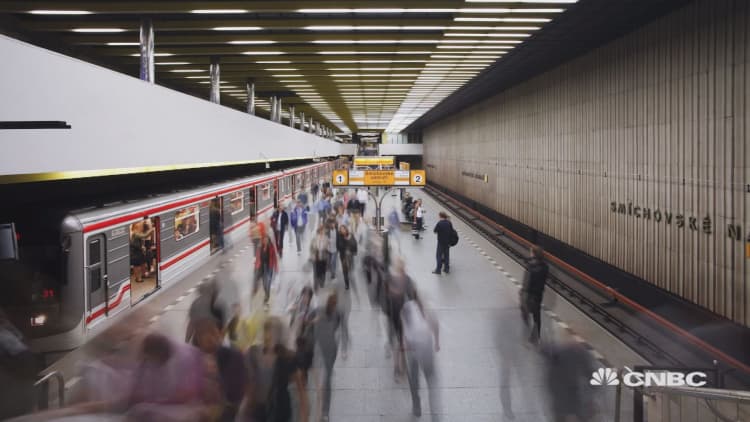
As all Londoners know, using public transport in the city can be a frantic and fraught experience at the best of times. For many, the morning and evening rush hours are characterized by cramped carriages, traffic jams and doing their best to avoid eye contact with fellow commuters.
But authorities are looking to find ways to make transport in the city both cutting edge and greener. Mayor of London Sadiq Khan wants the city's public transport fleet to generate zero exhaust emissions, for example. The mayor's Transport Strategy, published earlier this month, said that current analysis showed that a "fully zero-emission fleet" could be in place by 2037.
One area that has already undergone a radical transformation is the way Londoners pay to travel on buses and on the city's underground and over-ground rail network. Buses no longer take cash payments and passengers use their cellphones, contactless debit or credit cards and the now ubiquitous Oyster travel card for their journeys.
The business behind the Oyster cards and contactless payment systems used in London is called Cubic Transportation Systems. Its President, Matt Cole, told CNBC's "Sustainable Energy" that its payments systems helped to increase the efficiency of transit agencies' operations. If public transport networks become efficient and faster then people may be more likely to ditch their cars and use trains and buses instead, or so the theory goes.
Artificial intelligence (AI) is another tool that can be used to potentially good effect. "Artificial intelligence gives us an opportunity to help educate people on the most efficient way to make a journey," Dave Roat, Cubic Transportation Systems' strategy manager, said. "And if you make a journey in the most efficient way, using the scarce resources of an urban population, we should be making that journey using less energy and be more efficient."
In the future, camera technology could become an integral part of a new system. "Rather than using your Oyster card or your equivalent in whatever city you live in, you could potentially use your face as your token to travel," Roat said. He added that camera technology could potentially be deployed in stations to facilitate the use of biometrics on public transport.
Another area being looked at is palm vein-scanning, a technology that Roat said reads the pattern of blood flow through a person's palms. He added that a palm vein-reading was unique to individuals.
"The reason that we are… interested in palm vein-scanning as opposed to potentially, say, fingerprints is you don't have to touch anything," Roat said. "You're not going to go to a gate and try to get the gate to read your thumb, because that sensor gets dirty. And it's really hard to keep it clean and clean enough to accurately read your thumbprint."
Matt Cole, Cubic Transportation Systems' president, said that the real goal was to develop a completely frictionless experience where the commuter would walk through a railway station or board a bus without having to make any physical gesture in order to pay for the journey.
Bluetooth and biometric ticketing were two technologies being looked at, he added, although we remain "a long way away" from seeing such a system due to both technology and policy issues.




